Notice of Online Archive
This page is no longer being updated and remains online for informational and historical purposes only. The information is accurate as of the last page update.
For questions about page contents, contact the Communications Division.
If you want to see the future of STEM, you’ve come to the right place.
Lafayette faculty members and students are actively working on innovative projects and research initiatives that demonstrate the College’s commitment to advancing science, technology, engineering, and math education. Here, we celebrate their accomplishments.

A Real Brainiac
St. John always wanted to be a lawyer. She even went to a specialized high school, Brooklyn’s Urban Assembly School for Law and Justice. But as she was studying forensics, her true interest came into focus. “I found myself drawn to the question of why do people do what they do?” she says. “What is happening in the brain that causes anxiety and aggression and other emotions and behaviors?” Those questions led St. John into a neuroscience major with a specialty in biomedical research. Over the course of her collegiate career, she has studied the link between nutrition and epilepsy, aggression and activation of the ventromedial hypothalamus (an area of the brain), aging and memory, and binge drinking and anxiety.
As a first-generation college student, St. John says she has benefited from mentors and wants to pay that forward. She’s a teaching assistant for a neuroscience lab this semester and an active volunteer with America Reads; she tutors local elementary and high school students twice a week. She’s applying to graduate schools with her eye on a career at an institution like Lafayette, where research and mentorship go hand in hand.
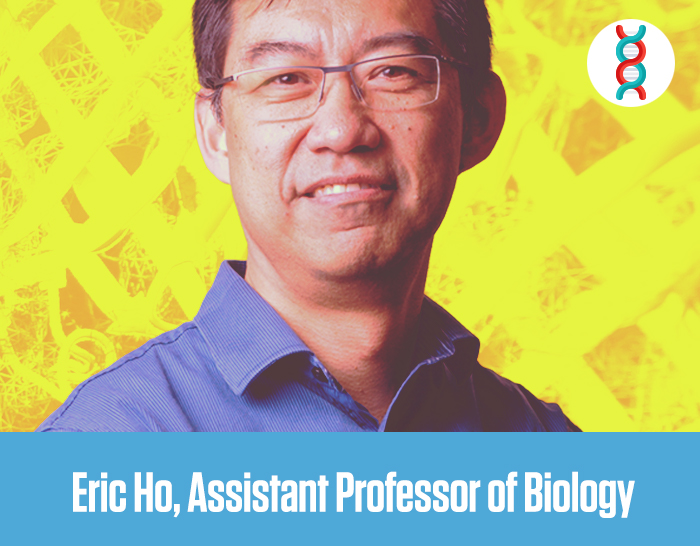
Cancer Killer
Ho was a project manager at a financial company in 2001 when the National Institutes of Health published an initial analysis of the human genome—the genetic blueprint for a human being. “That changed everything,” Ho says. “My background was in computer science, but I was interested in the opportunity that existed to decipher the genome and advance our understanding of it.” So he went back to school and earned a Ph.D. in biochemistry. Today, as a computational biologist, he integrates data, technology, statistics, and genetics to solve biological problems.
The problem he’s tackling? It’s a big one: cancer. Because chemotherapy has many side effects, Ho wants to advance targeted drug therapy. “We are investigating exome sequencing, a technology that can specifically identify the mutation of a gene,” he says. “This tool can look at the mutation and then look in a series of databases and identify the drugs and clinical trials that would be best for the patient.” His dream is for the tool to be accessible in a clinical setting so physicians can easily identify the best treatments for their patients. “Everyone knows someone impacted by cancer,” Ho says. “And right now, we’re not doing a really good job at taming this disease.”

Show Them the Money!
If summer is basketball’s off-season, the Charlotte Hornets’ business analytics office didn’t get the memo. Summer days move at a blistering pace there, as the marketing folks are planning and making predictions for the upcoming season. Which is what made Hoeft such an all-star asset to the team. As a summer intern, she used her statistical smarts to build a data model that the Hornets used to optimize their schedule—and maximize their bottom line. “So, for instance, an ideal schedule would have the Hornets playing the Golden State Warriors on a Friday in March,” explains Hoeft, who received an internship stipend funded by Lafayette alumni donations. “If we are scheduled to play the Warriors on a Wednesday in November, using my model, I could say how much money we could make from moving that game to a better date.”
Hoeft thrived in the fast-moving, dynamic environment. “Some interns in other departments were really bored and had a lot of downtime because it was the off-season,” says Hoeft, who spent her previous summer doing consumer data analysis for Foot Locker. “I feel lucky that I got to contribute and learn so much.” The sports junkie from Poughkeepsie, N.Y., will be job hunting this spring. Her dream position? Doing analytics in pinstripes for the Yankees.
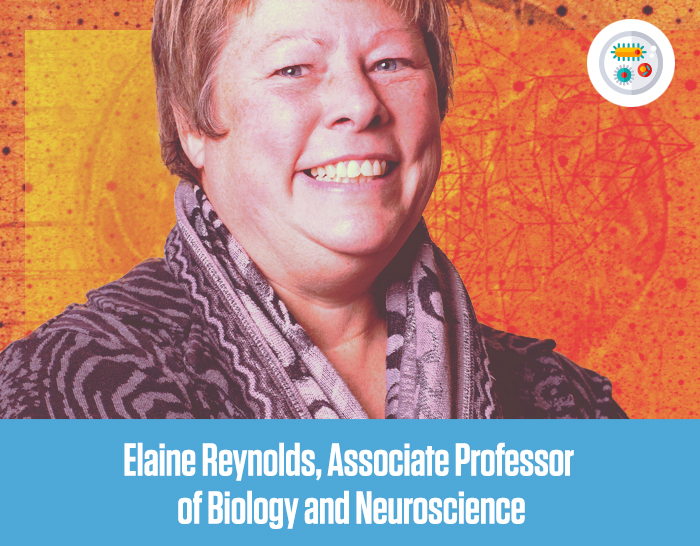
Always Learning
Reynolds encourages her students to be lifelong learners. And she takes her own advice to heart. Her natural curiosity and eagerness to learn have expanded her quest for knowledge across several disciplines. Starting in 2008, she worked with Ed Kerns, Eugene H. Clapp II ’36 Professor of Art, to create an interdisciplinary course called Art and Neuroscience and Consciousness, which explores the brain as an instrument of creation. Her collaboration with Kerns went beyond the classroom. “My feeling was if I’m going to teach art, I should start practicing it,” says Reynolds, who partnered with Kerns on exhibitions at Muhlenberg College and Lafayette and with Michael Hadley ’10 on several art installations at School of The Art Institute of Chicago, New York Hall of Science, and Easton Farmer’s Market.
More recently, she teamed up with Jeff Pfaffmann, associate professor of computer science, on a computational biology project that advances her study of neurodevelopment. “I think it’s good for my students to see that here I am a scientist, not an artist or a coder, yet I’m willing to work to develop my knowledge in these areas,” says Reynolds, who spoke at CUE Art Foundation about the convergence of art and science in New York City Nov. 4. “I think it’s important to model lifelong learning.”
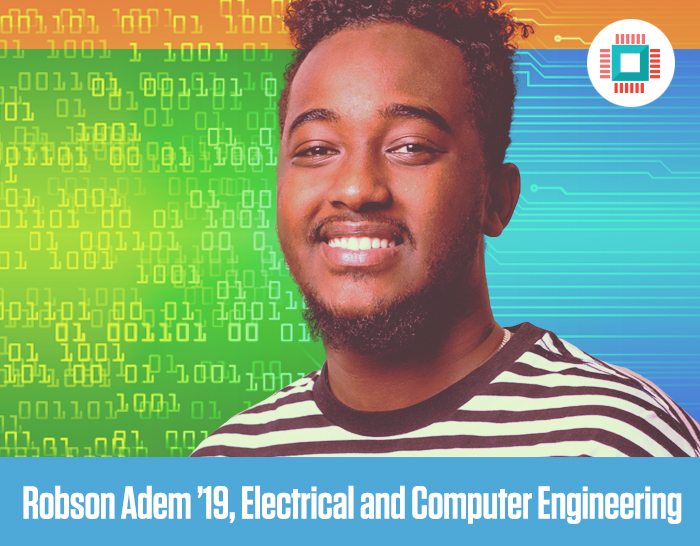
Lending a Hand
It can be challenging for international students to find summer gigs at major research labs, many of which say only U.S citizens need apply. That makes the opportunities available all the more competitive. And it makes Adem’s ability to land a research scholar position at the Advanced Robotics and Controls Lab at University of California-San Diego even more impressive. “I collaborated on the design of a robotic glove for people who have lost muscle or nerve function,” says Adem, who is from Ethiopia. “Some technologies are very bulky. We used super-coiled polymers, which contract when heated, to create a soft, light glove.”
UCSD isn’t alone in recognizing Adem’s potential. Facebook awarded him a scholarship so he could attend the ACM Richard Tapia Celebration of Diversity in Computing Conference in Atlanta in September, an experience that would’ve otherwise been cost-prohibitive. “A lot of companies are heading into artificial intelligence and machine learning, so it was good for me to learn more about that so I can shape my experiences in that direction,” says Adem, who plans to pursue a software/hardware engineering career. “It was rewarding to work on something to benefit others. That’s definitely the type of work I want to do.”
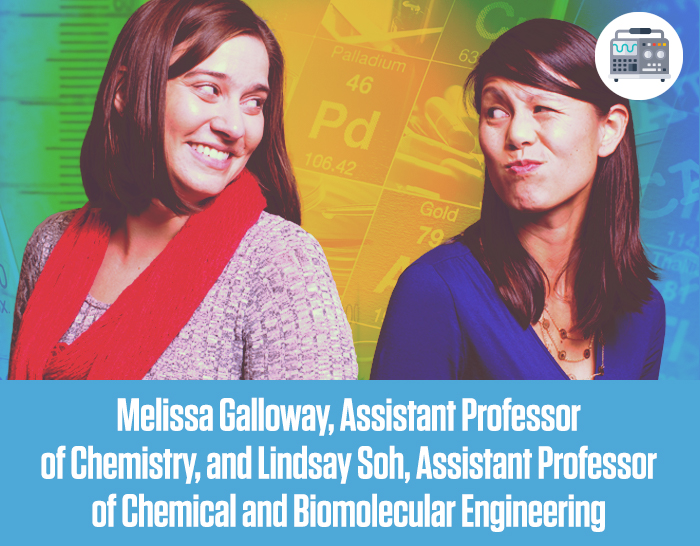
Changing the Game
Galloway and Soh are the proud caretakers of a special new arrival on campus. Thanks to a prestigious, two-years-in-the-making $399,999 National Science Foundation grant, the duo was able to acquire a liquid chromatography/supercritical fluid chromatography/mass spectrometer (or LC/SFC/MS). Both professors say the instrument, which enables them to identify and quantify individual chemicals in a mixture of compounds, will transform their work. “This will significantly improve our research,” Galloway says. “Our research capabilities are so much greater now,” Soh adds.
NSF grants—especially ones of this magnitude–aren’t easy to snag. Funding is reserved for cutting-edge research that has the potential of bringing substantial benefits to society. Indeed, that’s what drives Soh and Galloway, whose grant proposal outlined specifically how the tool would “mediate negative implications and optimize beneficial outcomes related to energy and the environment.” How so? Soh is using the LC/SFC/MS to further her study of biodiesel production and biomass processing. And Galloway is using it to identify chemical compounds in the atmosphere that can impact health and climate change. Both women are passionate about green chemistry and green engineering and eventually want to use their research findings to fuel educational outreach in the community.
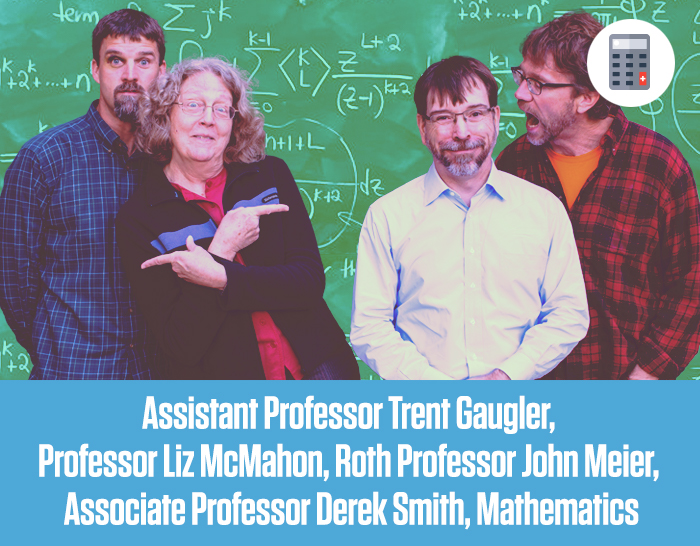
It All Adds Up
More than 400 students from institutions across the country vied for the chance to spend their summer chalking up the blackboards of Pardee. Only 10 were selected, including Lafayette’s Joshua Radack ’18. Securing a spot in the math department’s Research Experience for Undergraduates (REU) program is an accomplishment—as is earning the ability host it. The program, which is funded by National Science Foundation, enables undergrads to complete an intensive, eight-week research project at a host institution. Not only does Lafayette have one of the longest-running REU programs in the country, dating back to 1992, but it’s one of only 57 sites and one of five small colleges that host a math-and-statistics REU.
McMahon and Smith worked to secure the latest three-year grant, and Meier and Gaugler (plus Brian Kronenthal ’07, who teaches at Kutztown University) mentored the students on their research projects, which they will present at the Joint Mathematics Meetings in January. The profs also plan social activities and outings. It all adds up to a tremendous experience. “Many REU students wouldn’t otherwise have the opportunity to do undergraduate research,” Smith says. “We’ve heard from some graduate programs that they expect applicants to have REU experience. We’re thrilled we can provide it here.”
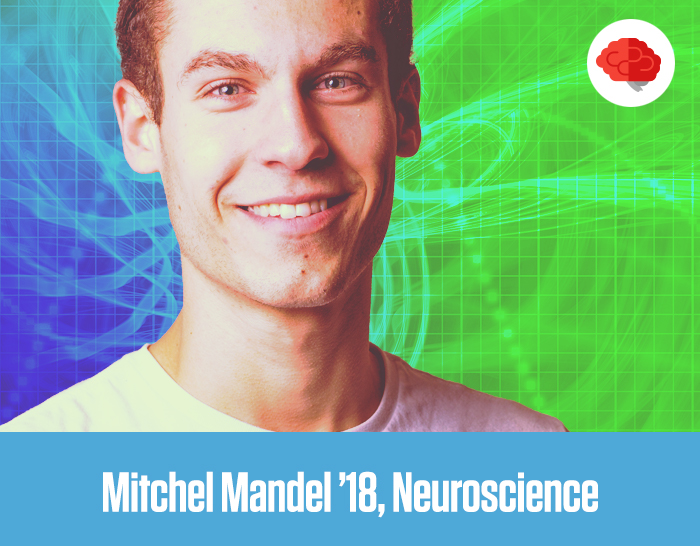
Teaching STEM to the Next Gen
Mandel is an avid rock climber—a sport that requires “planning your route and always thinking three steps ahead,” he says. That mindset has served Mandel well; he pursued neuroscience because he was fascinated with how the science of the brain intersected with biological functions as well as the philosophical aspects of the mind. He also wanted a good foundation for med school. Over the past three years, he’s accumulated the coursework, the grades, and the research experience to be a med-school shoe-in. For one, he conducted research with Jim Dearworth, associate professor of biology, on the retinal cells of red-eared slider turtles. The goal: to see how oxygen conditions impact the animals’ eye function, which could ultimately expand the scientific community’s understanding of how the brain is affected by reduced oxygen flow, which can occur during a stroke.
But Mandel recently had an epiphany. His work as a student instructor and teaching assistant has changed his course. “I like watching people develop an understanding for material,” says Mandel. “Some people start out being completely confused. I enjoy helping them break down a concept, step by step, and seeing them understand it.” So grad school and a teaching career are now his next steps ahead.
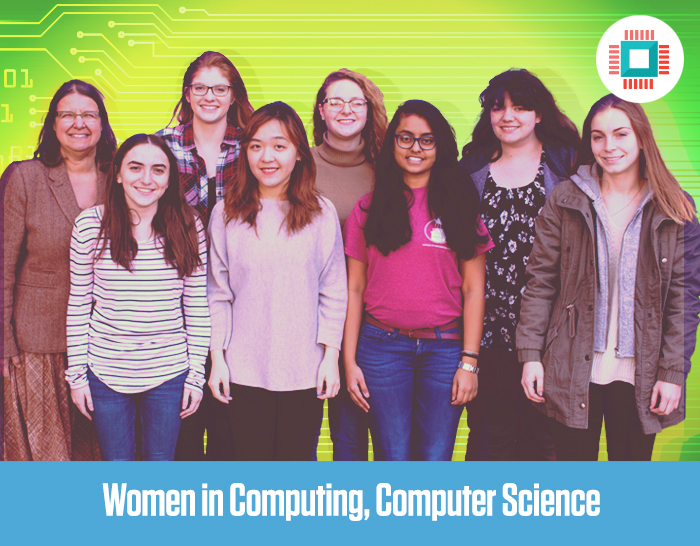
Women Unite!
The number of women majoring in STEM fields is on the rise. With one exception: computer science. “There’s a diversity crisis in tech,” says Shira Wein ’19, a computer science and Spanish double major. “Both the number and proportion of bachelor’s degrees in computer science earned by women continues to decline.” To help retain women in the computer science major, students founded Women in Computing, a supportive community that achieved official campus club status in September.
In early October, eight members of the club traveled with their adviser, Joann Ordille, associate professor of computer science, to Orlando to attend the Grace Hopper Conference, the world’s largest gathering of women in tech. The program included high-profile speakers like Melinda Gates plus career-development opportunities. But the real value of the experience went beyond those tangibles. “It felt like the women there were creating a safety blanket for us,” says Francine Dennehy ’19. “It was like, ‘you are going to face challenges out in the field, but you’ll always have our community to fall back on.’ It’s a sisterhood we are now part of.”
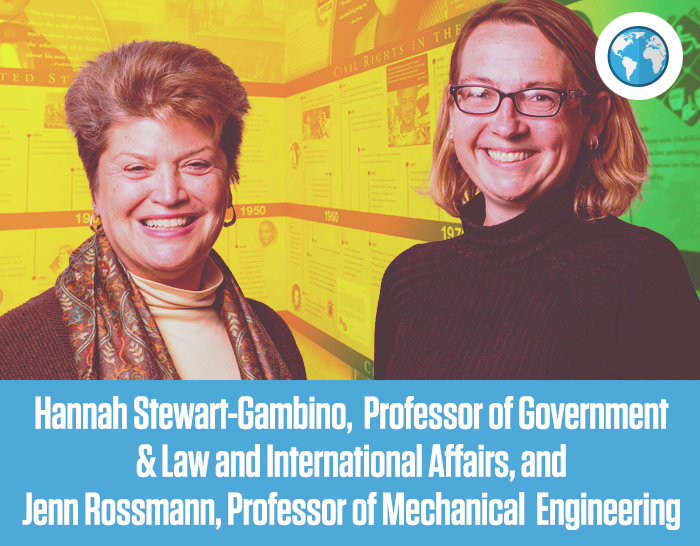
Thought for Food
The course “Feed the World: The Grand Challenge of Global Hunger” fills up with first-year students whose intended majors include a full range of STEM to non-STEM disciplines, but who all are interested in confronting one of the most complex global issues. Rossmann and Stewart-Gambino combined their mutual passions and energies about social issues to create the First-Year Seminar, building on the College’s strengths in applied, real-world projects that are based on the belief that solutions to big problems require collaborative contributions from both engineering and the liberal arts.
But linking disparate academic perspectives can itself be a challenge. “As engineers, we often overestimate our ability to solve problems, while non-engineering students sometimes lack the confidence to suggest solutions to engineering students, and a multidimensional problem can seem overwhelmingly complex,” Rossmann says. “There can be a chasm to overcome so that everyone appreciates the power and the limitations of the expertise they bring to the table.” Empathy, the first step in an engineering design process, it turned out, was the common ground. Working in teams, students put forward possible solutions to solve hunger and food insecurity issues that span the interdisciplinary spectrum. “Most of us are trained to listen with narrow ears,” Stewart-Gambino says. “But what’s so awesome about the Lafayette faculty is that we share a passion for teaching students and building their confidence to engage in the world.”
Categorized in: Academic News,
Biology,
Chemical and Biomolecular Engineering,
Chemistry,
Computer Science,
Electrical and Computer Engineering,
Engineering,
Featured News,
Government and Law,
Interdisciplinary,
International Affairs,
Mathematics,
Neuroscience,
News and Features,
Women’s and Gender Studies









